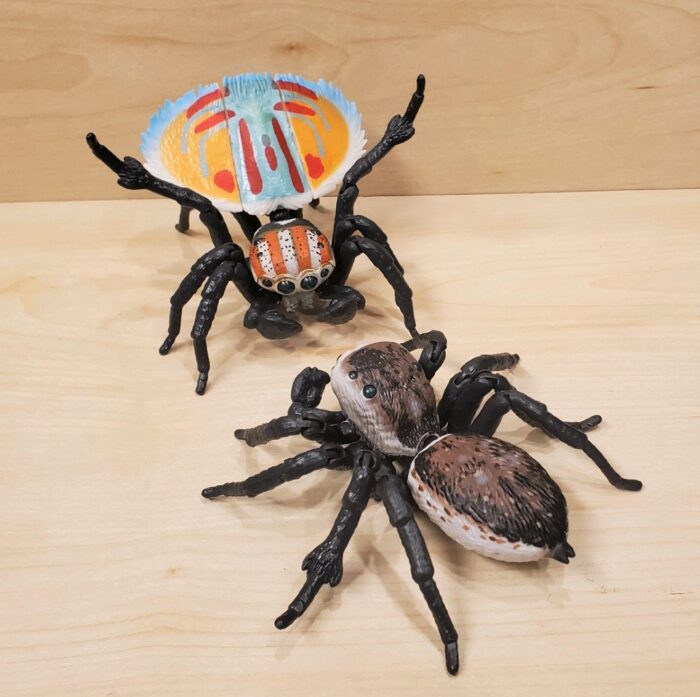The genus Maratus, commonly referred to as peacock spiders, consists of over 80 species, all endemic to Australia. One must wonder how a single genus of spiders could speciate to this magnitude on a single geographic land mass (although there are some on Tasmania). The answer lies in their courtship rituals.
Brand: Bandai/Bandai Spirits
Japanese Rhinoceros Beetle, life cycle (Bandai Spirits & F-toys)
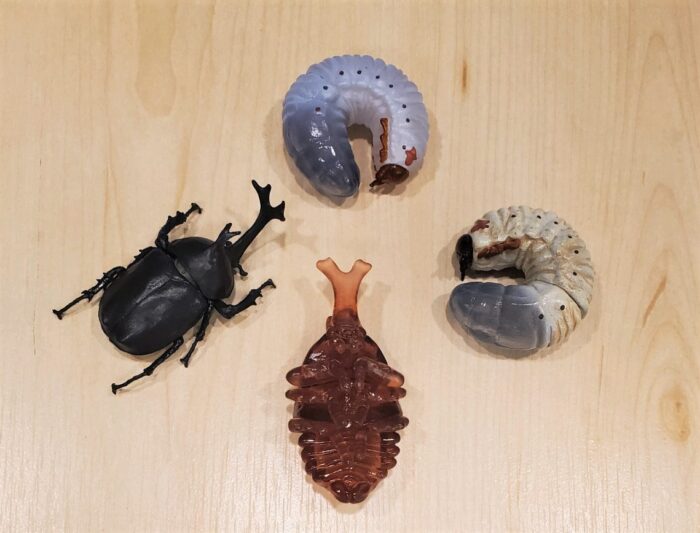
In just under two years ago, on August 21, 2019, I posted the first review here on the Animal Toy Blog. Now, I have the pleasure of posting review #500! Wow, 500 reviews just under two years! Many thanks to all the reviewers who have made this possible!
Allomyrina dichotoma is known as the Japanese rhinoceros beetle in English and kabutomushi in Japanese.
Rubber Ducky Isopod (Dango Mushi 08 by Bandai)

Rubber Ducky is a common name given to a species of Cubaris that was discovered in limestone caves in Thailand in 2017. To my knowledge, the species is still undescribed (I propose C. erniei). Despite this, it is becoming very popular in the hobby of rearing isopods (honestly, until I investigated this figure before buying it, I had no idea isopods were so popular in terraria).
Electric Ray (Animal Kaiser by Bandai)

Review and images by JimoAi; edited by bmathison1972
The Batoidea are a diverse group of fish classified within the class Chondricthyes, like their shark cousins, although nowhere near as popular, which is a shame as there are many charismatic species of rays including the butterfly ray, banjo ray, giant guitarfish, and the torpedo rays/numbfish.
Japanese Giant Mantis (Diversity of Life on Earth – Japanese Giant Mantis by Bandai)

The Japanese giant mantis (Tenodera aridifolia) is a large mantid distributed in Japan, Taiwan, and China. There has been some confusion on the taxonomic identity of this species, as the Chinese mantis (T. sinensis), which is more familiar to most casual observers and non-specialists, was originally described as a subspecies of T.
Asian Swallowtail, larva (Life With Insect Desktop Models by Bandai Spirits)

Today I am reviewing another figure from the 2020 Life With Insect collection by Bandai Spirits. This time, we are looking at the larva of the Asian swallowtail, Papilio xuthus, which was part of a set of three immature insects sold together as Desktop Models. The other two in the trio are the larva of the Japanese rhinoceros beetle and the nymphal exuvia of the large brown cicada (which was already highlighted on the Blog here).
Little Barrier Giant Weta (Life with Insect by Bandai Spirits)
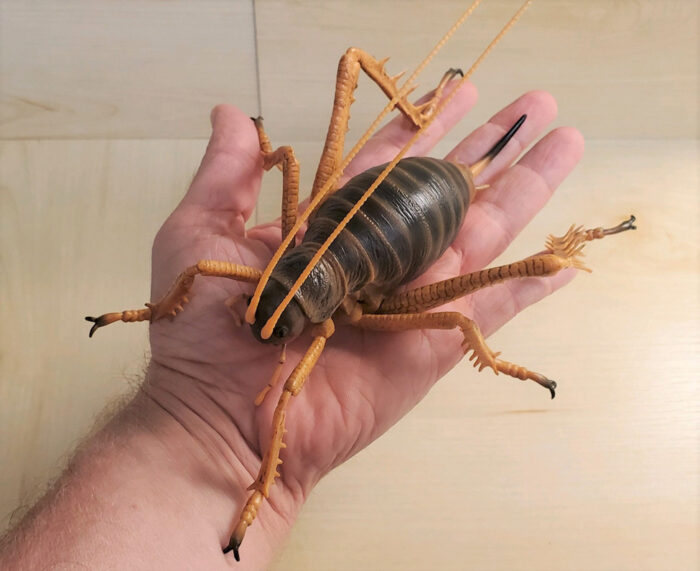
Today we are looking at the Little Barrier giant weta (Deinacrida heteracantha) by Bandai Spirits (a sister company to Bandai) for their 2020 series, Life With Insect. The Life With Insect series was a special release only sold at a grocery store chain in Japan. The figures started to sell out quickly and now permeate online markets, such as eBay, fetching exhorbitant prices!
Large Brown Cicada, ecdysis process (Bandai, Bandai Spirits, Break Co. Ltd., & Kaiyodo)
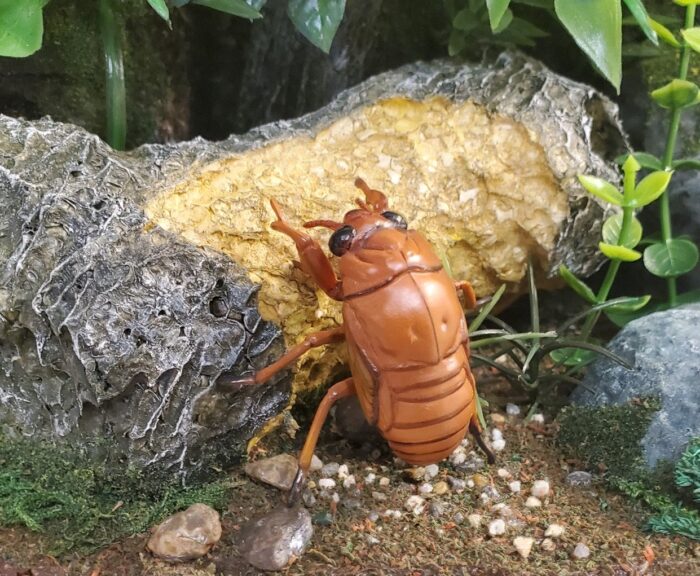
Today we are looking at the ecdysis process of the large brown cicada (Graptopsaltria nigrofuscata), a species of cicada distributed throughout much of Southeast Asia, including China, the Korean Peninsula, and Japan. The ecdysis process is whereby a growing animal sheds its skin as it gets larger (e.g., a molting snake) or an insect advancing to the next stage of development, as we will see in this review.
Red-streaked Box Crab (Dango Mushi 06 by Bandai)
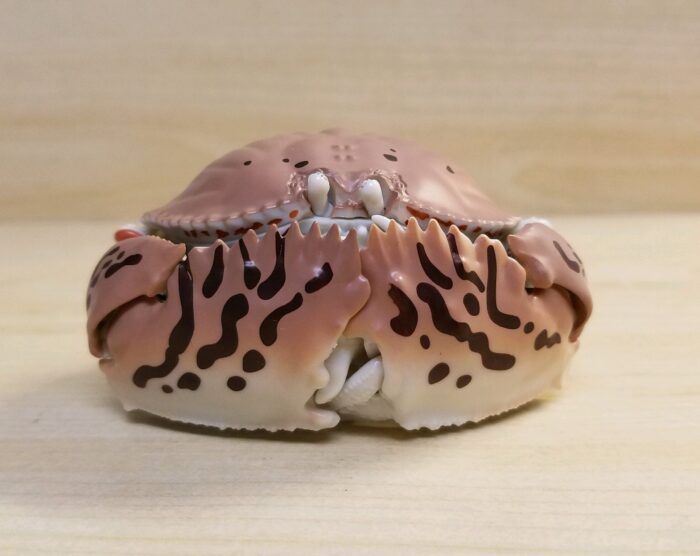
Calappa lophos, commonly known as the red-streaked box crab or the common box crab, is a species of box crab (Calappidae) endemic to the Indian Ocean and western Pacific Ocean, including Andaman Sea and the waters around Taiwan, Japan, and Australia. For years, this species has been widely ignored by most manufacturers, with only three examples by Kaiyodo in 2003 (Kurosio Komekko), 2013 (Capsule Q Museum), and 2018 (Aquatales).
Woodpecker Finch (Nature Zone: Galapagos by Bandai)

It has been quiet on the Blog, so I thought I would put up a figure that just arrived in the mail today, the woodpecker finch (Camarhynchus pallidus) by Bandai from the Galapagos Nature Zone collection. The Galapagos collection is one of at least two geographically-focused sets in the Nature Zone series (the other I am aware of is for Australia).
Blue Malayan Coral Snake (Animal Kaiser by Bandai)
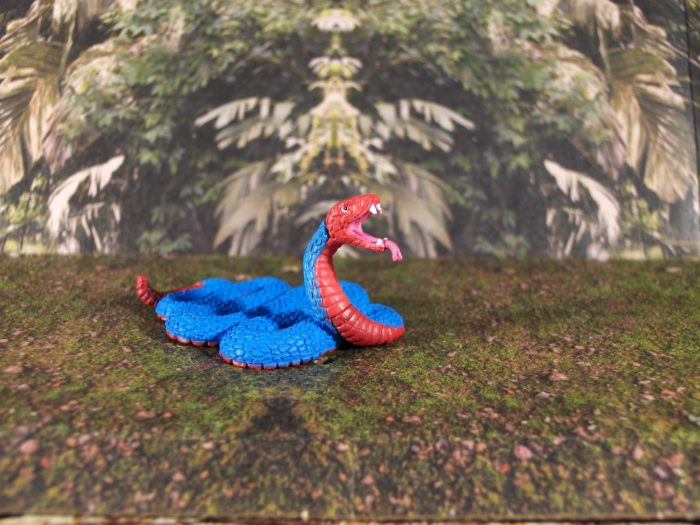
Today, another post, another Bandai Animal Kaiser figure. After talking about the Velez Ray I realized that there were several from the Animal Kaiser series that would be worth looking at. So I went over the ones I have to see what would be interesting. This one really stood out, so I decided to talk about it.
Velez Skate (Animal Kaiser by Bandai)

This post will be discussing an unusual figure from an unusual line–the line is the figures made by Bandai in conjunction with the game Animal Kaiser, and the animal is a Velez’ ray or Velez skate, Rostroraja velezi (Chirichigno, 1973). First off, ray or skate? Well, even Fishbase refers to it as a ‘ray’, but the genus Raja refers to the skates, which are a type of ray.

